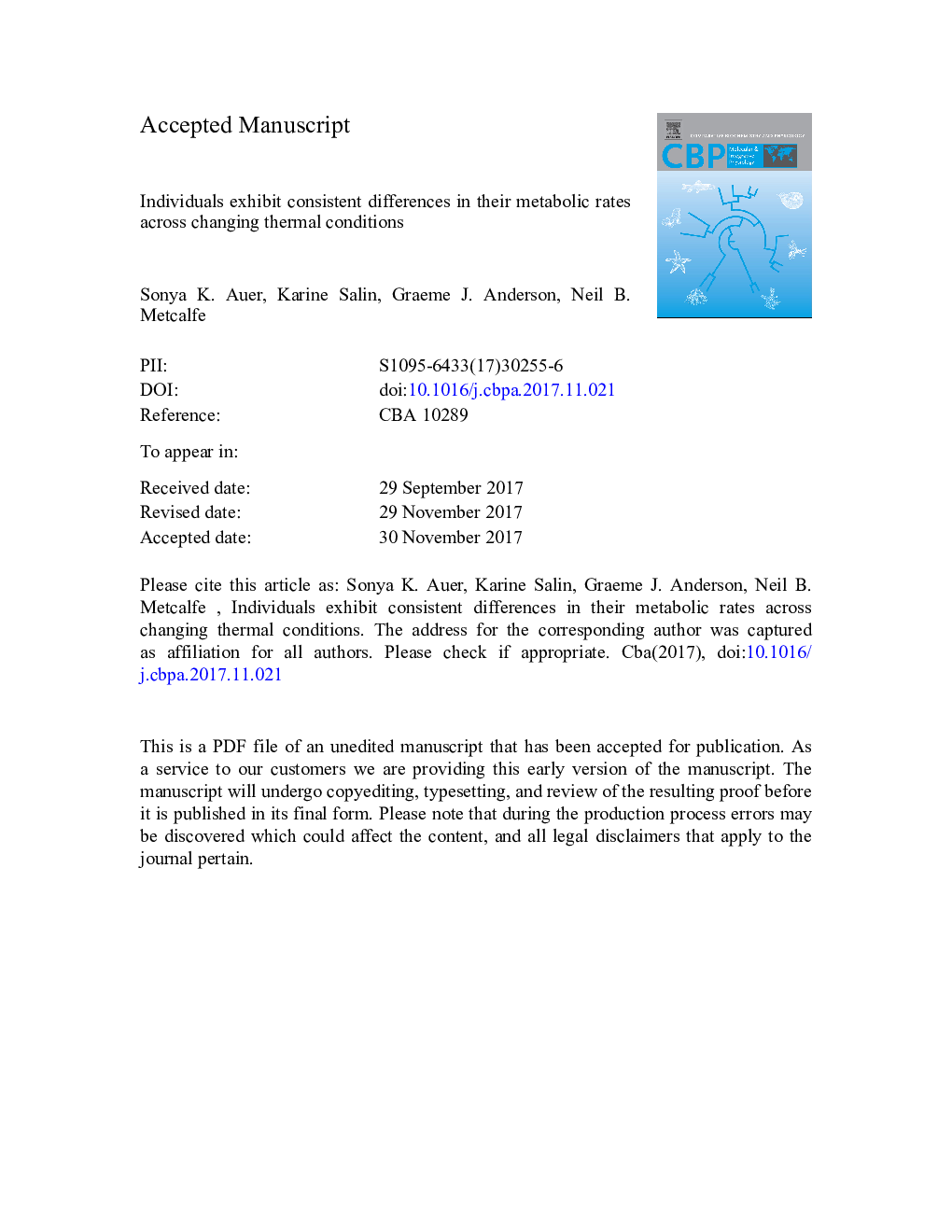| Article ID | Journal | Published Year | Pages | File Type |
|---|---|---|---|---|
| 8318270 | Comparative Biochemistry and Physiology Part A: Molecular & Integrative Physiology | 2018 | 19 Pages |
Abstract
Metabolic rate has been linked to growth, reproduction, and survival at the individual level and is thought to have far reaching consequences for the ecology and evolution of organisms. However, metabolic rates must be consistent (i.e. repeatable) over at least some portion of the lifetime in order to predict their longer-term effects on population dynamics and how they will respond to selection. Previous studies demonstrate that metabolic rates are repeatable under constant conditions but potentially less so in more variable environments. We measured the standard (= minimum) metabolic rate, maximum metabolic rate, and aerobic scope (= interval between standard and maximum rates) in juvenile brown trout (Salmo trutta) after 5 weeks acclimation to each of three consecutive test temperatures (10, 13, and then 16 °C) that simulated the warming conditions experienced throughout their first summer of growth. We found that metabolic rates are repeatable over a period of months under changing thermal conditions: individual trout exhibited consistent differences in all three metabolic traits across increasing temperatures. Initial among-individual differences in metabolism are thus likely to have significant consequences for fitness-related traits over key periods of their life history.
Related Topics
Life Sciences
Biochemistry, Genetics and Molecular Biology
Biochemistry
Authors
Sonya K. Auer, Karine Salin, Graeme J. Anderson, Neil B. Metcalfe,
